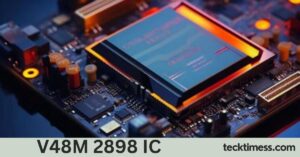Harmonicodecom is a sophisticated signal processing technique designed to break down complex signals into their harmonic components. This method is invaluable in various fields like engineering, telecommunications, and audio processing, as it provides a clearer understanding of signal structures and helps in signal analysis, noise reduction, and feature extraction.
What is Harmonicodecom?
Harmonicodecom, derived from the words “harmonic” and “decomposition,” is all about dissecting a signal into its basic harmonic elements. In simple terms, when we encounter a complex signal, it is often a combination of simpler signals. Harmonicodecom allows us to identify and separate these individual harmonics, making it easier to analyze and process the signal.
Why is Harmonicodecom Important?
Understanding harmonic components in a signal is crucial for several reasons:
- Noise Reduction: By identifying the harmonic components, it’s possible to distinguish between useful signal parts and noise, allowing for better noise filtering.
- Signal Analysis: It helps in breaking down a signal into its fundamental frequencies, aiding in the study and interpretation of the signal.
- Feature Extraction: In applications like audio processing, identifying harmonics is key to extracting features such as pitch and tone.
How Does Harmonicodecom Work?
Harmonicodecom involves mathematical algorithms that decompose a signal into its harmonic components. Here’s a basic outline of how it functions:
- Signal Input: The process begins with a complex signal that needs to be analyzed.
- Decomposition: The signal is then broken down into its harmonic components using various algorithms, such as Fourier Transform or Wavelet Transform.
- Analysis: The decomposed signal is analyzed to identify the frequency, amplitude, and phase of each harmonic component.
- Reconstruction: In some cases, the signal is reconstructed after processing, retaining only the desired harmonics while eliminating noise.
Applications of Harmonicodecom
Harmonicodecom is employed in various fields due to its versatility and efficiency in signal processing. Some of its primary applications include:
1. Audio Processing
- Noise Reduction: By separating the noise from the desired audio signal, Harmonicodecom can enhance audio quality.
- Music Analysis: In music production, it helps in analyzing and processing musical notes and chords, leading to better sound mixing and mastering.
2. Telecommunications
- Signal Clarity: In communication systems, it helps in enhancing signal clarity by isolating and amplifying important harmonic components.
- Error Detection and Correction: It aids in identifying and correcting errors in transmitted signals, improving communication reliability.
3. Engineering
- Vibration Analysis: In mechanical engineering, it is used for vibration analysis in machinery, helping detect and prevent mechanical failures.
- Structural Health Monitoring: By analyzing the harmonics of a structure’s response to external stimuli, engineers can monitor the health of buildings, bridges, and other infrastructures.
The Science Behind Harmonicodecom
Harmonicodecom relies heavily on mathematical concepts, particularly Fourier analysis. Fourier Transform is a key technique used in this process, where a time-domain signal is converted into its frequency-domain components. This allows us to see the individual frequencies that make up the signal.
Fourier Transform in Harmonicodecom
The Fourier Transform breaks down a signal into sine and cosine functions, which represent the harmonic components. Each harmonic has a specific frequency, amplitude, and phase, giving a complete picture of the signal’s composition.
Wavelet Transform
While Fourier Transform is popular, Harmonicodecom can also use Wavelet Transform for analyzing signals. Wavelet Transform offers better resolution and can handle non-stationary signals, making it suitable for complex signals that change over time.
Benefits of Using Harmonicodecom
1. Precision in Signal Analysis
Harmonicodecom provides a detailed analysis of signals, enabling precise identification of frequency components. This is essential in fields where signal clarity and accuracy are paramount, such as in medical diagnostics (e.g., ECG and EEG signal analysis).
2. Improved Noise Filtering
By decomposing signals into their harmonic components, Harmonicodecom allows for more effective noise filtering. This is crucial in environments with high interference, ensuring that the essential signal is preserved while unwanted noise is removed.
3. Enhanced Feature Extraction
In audio processing and speech recognition, Harmonicodecom plays a significant role in extracting features like pitch, tone, and timbre. This enhances the quality of audio synthesis and improves the performance of speech recognition systems.
Challenges in Harmonicodecom
Despite its advantages, Harmonicodecom comes with certain challenges:
1. Complexity of Computation
The mathematical algorithms used in Harmonicodecom are complex and require significant computational power, especially for real-time processing. This can be a limitation in applications where quick processing is essential.
2. Sensitivity to Noise
While Harmonicodecom is effective in noise reduction, it can also be sensitive to certain types of noise, potentially leading to inaccuracies in the decomposition process. Advanced filtering techniques are often required to mitigate this issue.
3. Dependence on Signal Quality
The effectiveness of Harmonicodecom largely depends on the quality of the input signal. Poorly sampled or low-resolution signals can lead to incomplete or inaccurate decomposition, affecting the overall analysis.
Advancements in Harmonicodecom
Recent advancements in signal processing have led to improved methods for Harmonicodecom. These include:
1. Adaptive Harmonic Decomposition
Adaptive algorithms can adjust to the changing characteristics of signals in real-time, providing more accurate decomposition. This is particularly useful in applications like biomedical signal processing, where signals can vary significantly over time.
2. Machine Learning Integration
Machine learning techniques are being integrated into Harmonicodecom to enhance its accuracy and efficiency. By training models on large datasets, it’s possible to improve the identification and decomposition of harmonic components in complex signals.
3. Hybrid Methods
Combining Harmonicodecom with other signal processing techniques, such as empirical mode decomposition (EMD) or Hilbert-Huang transform, has led to more robust and versatile analysis tools. These hybrid methods offer improved performance in handling non-linear and non-stationary signals.
Practical Example of Harmonicodecom
To better understand Harmonicodecom, let’s consider a practical example in audio processing:
Example: Enhancing Voice Quality in Audio Recordings
Imagine you have an audio recording with background noise. Using Harmonicodecom, the following steps can be taken to enhance voice quality:
- Decompose the Audio Signal: Apply Harmonicodecom to break down the audio signal into its harmonic components.
- Identify and Isolate Harmonics: Identify the harmonics that correspond to the human voice while isolating those associated with noise.
- Filter Out Noise: Remove or suppress the unwanted harmonic components (noise) while retaining the desired harmonics (voice).
- Reconstruct the Signal: Reconstruct the audio signal using only the desired harmonic components, resulting in an enhanced audio quality with reduced noise.
Future Prospects of Harmonicodecom
Harmonicodecom continues to evolve, with ongoing research focused on improving its efficiency and applicability. Future prospects include:
1. Real-Time Processing
Advances in computational power and algorithm optimization are paving the way for real-time Harmonicodecom. This will be particularly beneficial in applications like live audio processing, telecommunications, and real-time monitoring systems.
2. Integration with AI and Machine Learning
The integration of artificial intelligence (AI) and machine learning into Harmonicodecom will enable more sophisticated signal analysis and feature extraction. AI models can learn to identify patterns and nuances in signals, further enhancing the accuracy of decomposition.
3. Expansion into New Fields
As technology progresses, Harmonicodecom is expected to find applications in new fields such as quantum computing, where signal analysis plays a critical role in interpreting quantum states and phenomena.
FAQs
What is Harmonicodecom used for?
Harmonicodecom is used for decomposing complex signals into their harmonic components, aiding in signal analysis, noise reduction, and feature extraction. It finds applications in fields like audio processing, telecommunications, and engineering.
How does Harmonicodecom differ from Fourier Transform?
While Fourier Transform is a technique used within Harmonicodecom to convert a time-domain signal into its frequency-domain components, Harmonicodecom is a broader process that may also include other decomposition methods like Wavelet Transform.
Can Harmonicodecom be used for real-time signal processing?
Yes, with advancements in computational power and algorithm optimization, Harmonicodecom can be applied in real-time signal processing, especially in applications like live audio processing and telecommunications.
What are the limitations of Harmonicodecom?
The main limitations include the complexity of computation, sensitivity to certain types of noise, and dependence on the quality of the input signal. Advanced filtering and adaptive algorithms can help address some of these challenges.
How does Harmonicodecom help in noise reduction?
Harmonicodecom helps in noise reduction by decomposing the signal into its harmonic components, allowing the identification and removal of unwanted noise harmonics while preserving the desired signal parts.
Is Harmonicodecom applicable in biomedical signal processing?
Yes, Harmonicodecom is used in biomedical signal processing, such as analyzing ECG and EEG signals, to identify and separate various physiological components from noise, aiding in accurate diagnosis and monitoring.
What future advancements can we expect in Harmonicodecom?
Future advancements include real-time processing, integration with AI and machine learning for enhanced signal analysis, and expansion into new fields like quantum computing.
Conclusion
Harmonicodecom is a powerful tool in the field of signal processing, offering precise decomposition of complex signals into their harmonic components. Its applications span across various domains, from audio processing to telecommunications and engineering. Despite its challenges, ongoing advancements are set to make Harmonicodecom even more efficient and versatile, potentially revolutionizing the way we analyze and interpret signals in the future.





